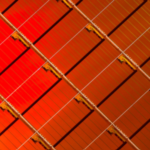Electric current is frequently mystifying and magical. Many natural events were perceived by humans before electricity as supernatural realities brought on by wrathful gods. Fortunately, individuals nowadays are aware of the rules of physics and may use them to their advantage without any issues. A Tesla coil is a resonant circuit made up of two inductively connected LC circuits. In other terms, it’s a transformer that can increase electrical voltage to generate significant sparks. It has primary and secondary circuits. The air may be thought of as an insulator under typical situations. Electrical current cannot flow between two isolated locations when a voltage is supplied between them. The electric field can get strong enough to absorb the energy needed to ionize additional particles if the voltage is raised. As the number of moving ions increases, the phenomena becomes more pronounced.
The heating of the space creates an electric current that intensifies the ionization of the air. The result is the formation of a highly ionized gaseous channel that functions as an electrical conductor and may support an electric arc. The spark emits a detonating boom and a strong illumination that lasts just a brief time. A very intense spark is lightning. The electric field must be greater than the dielectric’s stiffness threshold in order to cause a spark. It is around 3 kV/mm for normal air, however it is greatly reduced by humidity. You need to provide a voltage of roughly 300,000 volts in order to create a spark that is 10 cm long (300 kV).
Length of spark
By measuring the duration of the sparks, you may determine the voltage between two conductors using this extremely generic formula. An electric field is created when a potential difference is placed between two electrodes:
E = V * d
where “d” is the distance between the electrodes and “V” is the voltage. There is a figure, referred to as the breaking point, for each material that denotes the smallest electric field required to cause a spark. Applying 30 kV is necessary to produce a 1 cm spark. Simply multiply the length of the spark (in centimeters), at a temperature of 25 °C with dry air, by 30 kV to determine the voltage between two electrodes. There are two spherical electrodes used in this technique. Depending on the pressure and humidity, the value may change. It is quite difficult to produce large sparks, as seen in Figure 1. A spark of 10 cm requires a voltage of 300,000 Volts, whereas a spark of 50 cm requires around 1,500,000 Volts. extremely dangerous.

It’s very impressive how the Nature can produce very big lightnings of milliard of Volts.
How does it work?
As previously mentioned, a Tesla coil is a unique resonant transformer with two connected coils that was developed by Nikola Tesla. A transformer with a Tesla coil functions differently from one with an iron core. The voltage gain produced by the two coils of a typical transformer is proportional to the ratio of turns. On the other hand, the gain of a Tesla coil can be significantly higher because it is proportional to:

When the constituent components are balanced correctly, a coupling that may produce an electromagnetic wave appropriate for lighting a luminescence lamp is possible. It’s air core is there. It uses a frequency range of 50 Khz to 30 Mhz. Energy is transferred from the primary to the secondary through the coil. As more energy from the main circuit is transmitted to the secondary one, a higher voltage is created on the secondary. As shown in Figure 2, the system is built on an RLC group and a sinusoidal generator. An RLC circuit is a series-connected electrical circuit that consists of a resistor (R), an inductor (L), and a capacitor (C). To achieve a high voltage, the transformer on air multiplies the input voltage by 100. The voltage reaches a high enough level to ignite the spark gap after a brief period. The second transformer’s primary coil and capacitor combine to create a resonant circuit. The secondary transformer coil is fastened to a toroid, which stands in for a grounded capacitor. The same resonant frequency is also generated via a resonant circuit. The spark gap eventually stops conducting, leaving just the energy in the toroid circuit after the energy is progressively transferred from the first circuit to the second. It takes some time for the voltage to increase sufficiently for the spark gap to start conducting once it stops doing so.

The resistor of 10 Ohm, the capacitor of 47 pF, and the inductor of 20 mH make up the example circuit in the picture, which defines the circuit’s Q factor. Use the formula in the box to get the circuit’s resonance frequency, which in the case is 164155.78 Hz. We get a lot larger voltage than what is delivered to the input if the RLC circuit is supplied exactly at its resonance frequency on the inductor. Under these circumstances, the circuit serves as an ideal resistive load for the voltage generator. We can see from these qualities that the coils’ creation cannot be arbitrary; rather, it must be the outcome of exact mathematics and formulae.
General schematic
The Figure 3 shows a general but fully working schematic of a Tesla Coil. The spinterometer and the capacitor (tank) can be mounted according two different configurations. Let’s go to illustrate its components. The construction is not hard but it needs carefulness.

The transformer T1 increases and elevates the input voltage to about 10 kV. This component is usually used to illuminate advertising signs with neon. You cannot use a traditional transformer. The capacitor C1, a Leyda’s bottle or a high voltage capacitors, is connected in parallel to the secondary of the transformer. C1 charges and discharge its voltage at the frequency of the input voltage. It’s interesting to note that the input voltage can be also a DC voltage (but without the first transformer). When the difference of the potential on C1 exceeds the limits imposed by the spinterometer, a spark occurs between its terminals and a strong current flows through L1, discharging the capacitor. The spark closes the circuit. L1 and L2 are two components of a transformer. L1 is the primary and L2 is the secondary. On the terminals of L2 a very high voltage will be present. The power of the current on the coils depends on the capacity of C1. You can connect several capacitors in parallel. It’s very important that this component be suitable for the used voltages. On the other hand you can connect in series and in parallel many capacitors, to obtain the requested operative voltage.
Construction
The transformer T1 serves as an elevator of the input voltage, as was previously stated. When handling it, use caution. According to Figure 4, the primary coil L1 is constructed using a thick wire wrapped around a 25 cm diameter plastic framework. L2 requires a lot of laborious building. You can utilize a 12-cm-diameter long plastic tube. The support should be painted with plastic in order to operate at their best. The coil is made up of 2000 rounds of 0.4 mm enameled wire (26 AWG).

The capacitors must be chosen and built with care. You cannot use normal capacitors. The difference of potential is very high and the components could be destroyed. It can follow the project of a Leyden Jar or you can connect together many polyester capacitors in series/parallel, to obtain the maximum amount of capacity and voltage of at least 15,000 Volts. The capacitors must not be polarized. You can build a very efficient capacitor using two aluminum foil glued to a glass plates, in the opposite faces. With the dimensions of 50 cm x 50 cm, and a thickness of glass of 3 mm, you can get a capacitor of 7378 pF. Glass has a very high dielectric constant. Anyway, this capacitor can be smaller. The Figure 5 shows different examples of High-Voltage Capacitors.

The spinterometer is as a very easy component as it’s very important. It is a device used to generate electrical discharges in the air through two electrodes. It consists of two spheres. The distance between the terminals can progressively reduced until the intensity of the electric field exceeds the dielectric rigidity value of the air and a spark occurs. You can see an example of spinterometer in the Figure 6.

During the construction pay attention to insulate the critical parts of the circuit.
Use
Soon after assembly is complete, the gadget may be tested. With any surgery, use caution. It is required to complete the setup without an electric connection. The sparks could hurt a lot. You may change the distance between the spinterometer’s two spheres when it is off to produce a spark. Move the two spheres 5 cm apart to customize the spark. Next, go cautiously toward the electrodes, shutting off the gadget each time. The capacitor’s capacity directly relates to the sparks’ power. Once you get the sparks in the spinterometer, the secondary coil is ready to product special effect. From its top you can produce large sparks, approaching metal objects to the sphere on the coil. You must keep them with a long insulated handle (wood or plastic). The length of the sparks (electric arcs) is proportional to voltage across the secondary coil. Don’t touch any part of the circuit with your hands. A spark of 20 cm is a very good result.
Tuning
The Tesla coil is similar to a radio receiver. It has to tuned to the resonance frequency to get the best performances from it. To improve the efficiency of the device, we suggest the following solutions:
- increase or decrease the number of turns of the primary coil;
- increase or decrease the number of turns of the secondary coil;
- move closer or further away the two spheres of the spinterometer among them by some millimeter (remember to switch off the power);
- increase as more possible the capacity of the tank of capacitors;
- change the connection on different circle on the primary coil, as shown in the Figure 7;
- use good quality materials and good components.

Conclusions
There are several ways to construct a Tesla coil. This is probably the simplest. When working with these circuits, exercise caution. High voltage is present. A strong ozone odor can be detected in the air when the Tesla coil is in operation. The gadget can eventually be scaled down, after which the Tesla coil’s output power can be increased. You can see a complete Tesla coil in Figure 8. It allows us to distinguish between (from left to right).
– the transformer (230V to 10,000V);
– the HV capacitor;
– the spinterometer;
– the two coils (primary and secondary).








